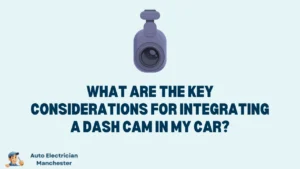
Imagine a dash cam seamlessly integrated into your car’s interior, silently capturing the road ahead without a tangle of wires spoiling the clean aesthetic. This dream can become a reality with a strategic approach to wire concealment during installation. This guide empowers you to transform your dash cam into a discreet guardian, offering peace of mind and a clutter-free driving experience.
Disappearing Act: Unveiling Hidden Wire Routing Techniques
Let’s delve into the world of hidden wire routing, exploring various techniques to achieve a clean and concealed dash cam setup.
Harnessing the Headliner Haven
The headliner, the fabric lining your car’s ceiling, is a popular choice for hiding dash cam wires. Here’s how to navigate this method:
Tool Time: Invest in a plastic trim removal tool. Metal tools can scratch your car’s interior, so plastic is the gentler choice.
Gently Does It: Using the plastic tool, carefully pry open a small gap at the edge of the headliner. Be mindful and avoid creating excessive force.
Snake it In: Feed the dash cam wire through the gap and gently push it along the headliner’s length towards the A-pillar (the pillar between the windshield and side window).
The Power of the A-Pillar
The A-pillar offers another strategic route for concealing wires. Here’s how to utilize this space:
A Pillar Peek-A-Boo: A-pillars often have small gaps between the trim panel and the pillar itself. Use your plastic trim removal tool to create a small opening.
Wire Whisperer: Carefully feed the wire through the opening created in the A-pillar.
Downward Journey: This route takes the wire down towards the dashboard, where you can use other methods to hide it behind panels or trim pieces.
Befriending the Dashboard Panels
Some vehicles allow for the removal of trim panels around the windshield and dashboard. This approach provides more hiding space for wires, but proceed with caution:
Consult Your Car’s Counsel: Before embarking on trim panel removal, refer to your car’s manual or consult online tutorials for specific removal methods. Understanding the proper technique prevents accidental damage.
Prying with Precision: Use plastic trim removal tools to gently pry loose the designated panels. Remember, careful and controlled movements are key.
Securing the Secrets: Once you’ve successfully hidden the wires behind the panels, securely reinstall them following the car’s manual or online instructions. A loose panel can rattle and create unwanted noise while driving.
Safety First: Never compromise the functionality of airbags or other safety features by placing wires in their deployment path. Always prioritize safety over aesthetics.
Clip It Up: Keeping Things Organized
For a clean and organized look, consider using adhesive wire clips. These handy tools can be your secret weapon in the battle against wire clutter:
Sticky Solutions: Adhesive wire clips come with a strong adhesive backing that allows you to stick them along the headliner, A-pillar, or other surfaces.
Wire Wranglers: Once the clips are secure, tuck the dash cam wires into their designated slots on the clips. This keeps them organized and prevents them from dangling or becoming an eyesore.
Alternative Dash Cam Wiring Solutions
While the methods discussed previously provide effective solutions for hiding dash cam wires, there are alternative approaches to consider depending on your needs and preferences:
Wireless Warriors
For those seeking a truly wire-free experience, wireless dash cams are a compelling option. These dash cams transmit footage to a separate device, often a smartphone or a dedicated receiver mounted on your windshield, eliminating the need for a connection cable to the car’s power source.
Convenience at a Cost: Wireless dash cams offer unmatched convenience when it comes to installation, but they often come at a higher price point compared to their wired counterparts. Additionally, wireless dash cams typically rely on batteries or supercapacitors, which require periodic charging or replacement.
Power Play: Some wireless dash cams come with parking mode features that continuously monitor your car even when parked. These features drain the battery more quickly, so consider a dash cam with hardwiring capabilities to provide a constant power source during parking mode.
Hardwiring Options
Hardwiring your dash cam directly connects it to your car’s electrical system, providing a constant and reliable power source. This eliminates the need to worry about running out of battery or finding a power outlet to plug in the dash cam.
Professional Touch: While hardwiring a dash cam is achievable with DIY instructions and kits available online, it’s generally recommended to consult a professional car audio installer to ensure proper installation and avoid any electrical complications.
Power Perks: Hardwired dash cams can continuously record even when your car is parked in parking mode, providing 24/7 surveillance for your vehicle.
A Final Note
While these methods empower you to achieve a hidden wire setup, remember that every car model has unique features and trim layouts. If you’re unsure about any specific aspect of the installation, consult a professional car audio installer for guidance.
FAQ
Is it safe to tuck wires under the carpet?
While it may seem like a quick solution, tucking wires under the carpet is not recommended. Wires can get damaged by being stepped on or exposed to moisture.

David Mack is a seasoned writer with a passion for the auto electrician niche. With years of hands-on experience and a knack for demystifying complex topics, David brings practical insights to his readers. Whether you’re a professional or a car enthusiast, his engaging articles offer valuable tips and trends in auto electrical systems.
